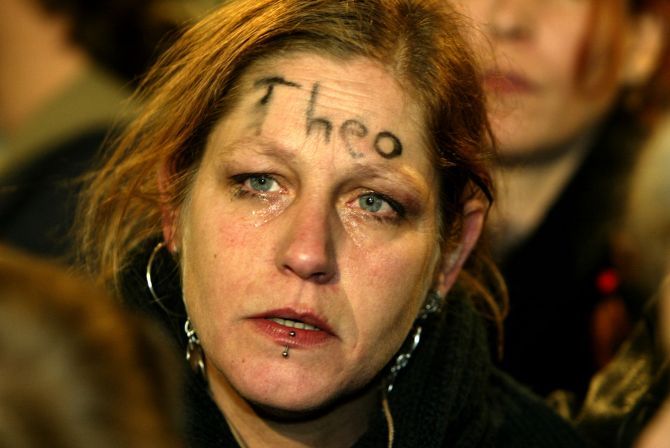The media has always been at the centre of condemnation and often violent retaliation from those its criticism seems to sting. Even as far back as the turn of the century when ‘muckrackers’ were very often manhandled by those in their cross hairs, the media has faced harsh and often violent rebuttals for expressing their opinions.
The attacks on the French satirical magazine Charlie Hebdo is merely one in a long list of attacks on the media by extremist groups that would like to mandate what and how of free press. So, for the uninitiated, we take a stroll down recent times to see how the media and media persons have seen fearful responses to perceived transgressions, with the hope that the future is brighter for journalists out there.

Firefighters carry a victim on a stretcher at the scene after a shooting at the Paris offices of Charlie Hebdo, a satirical newspaper on Wednesday. Photograph: Jacky Naegelen/ Reuters
The attack on the French magazine Charlie Hebdo saw 12 people dead and several injured by terrorists miffed with controversial and perceptibly offensive cartoons that the magazine published. Not surprisingly, this was not the first attacks on Hebdo, which had in 2011 been attacked after it had published the controversial cartoon of Prophet Muhammad.

A man holds up a sign in memory of US journalist James Foley during a protest against the Assad regime in Syria in Times Square in New York. Photograph: Carlo Allegri/ Reuters
In 2014, two American journalists, one American and two British aid workers, an unknown number of Syrians, several Lebanese and Kurdish soldiers, were beheaded by the Islamic State of Iraq and the Levant, a radical Sunni Islamist group operating in Iraq and parts of Syria, and beheading videos were posted to social media.

Security officials and rescue teams crowd near the site of a bomb blast in Matni town, in the outskirts of Peshawar. A bomb went off in a market near the northwestern city of Peshawar in Jun 2011, killing four people and wounding three, said hospital officials. Photograph: Fayaz Aziz/ Reuters
The June 2011 Peshawar bombings occurred on 12 June 2011 in Peshawar, Pakistan. At least 34 people were killed and more than 90 were injured when two bombs exploded in a market soon after midnight. Two journalists, Asfandyar Abid Naveed and Shafiullah Khan, were killed as a result of covering the double suicide bombing in Peshawar.
The first bomb went off around 11.50 pm local time in Khyber market area, which is a commercial and residential area, and injured three people.
After a crowd gathered in the area, a teen-aged suicide bomber on a motorcycle set off a second explosion killing many people on the spot. About 10 kilograms of explosives were used in the second blast according to officials.

A woman with the first name written on her face of the controversial filmmaker and newspaper columnist Theo van Gogh who was shot and stabbed to death sheds a tear during a memorial service in Amsterdam. Photograph: Maartje Blijdenstein/ Reuters
Theodoor "Theo" van Gogh was a Dutch film director, film producer, columnist, author and actor who worked with the Somali-born writer and politician Ayaan Hirsi Ali to produce the short film Submission (2004), which criticised the treatment of women in Islam.
Many Muslims took offence at its criticism. On November 2, 2004, Van Gogh was murdered by Mohammed Bouyeri, a Dutch-Moroccan Muslim.

A screengrab from the video of the execution of Steven Sotloff released by ISIL. Sotloff was an American-Israeli journalist, who was kidnapped in Aleppo, Syria, and held captive by militants from the ISIL. On September 2, 2014, ISIL released a video, showing one of its members beheading Sotloff.
Among those journalists executed by the ISIS and other Islamic fundamentalist organisations were Steven Sotloff, Raad al-Azzawi of reporters without borders and David Haines. The murdered journalist Daniel Pearl was also beheaded by Islamic extremist organisations in Pakistan.

Pakistani journalists and cameramen chant slogans during a protest, called by Pakistan Federal Union of Journalist, against the attack on television anchorperson Hamid Mir, outside the press club in Karachi. Photograph: Akhtar Soomro/ Reuters
Pakistani journalist Mukarram Khan Atif was killed in Peshawar in 2012 for engaging in anti-Taliban reportage. Pakistani journalist Hamid Mir, who has in the past interviewed Osama Bin Laden, was also attacked upon. Mir he was attacked by unknown men on his way to the Geo office in Karachi in a gun attack on 19 April 2014.
Mir was shot thrice in the attack following which He was rushed to a hospital and operated upon, where he was declared to be out of danger. It is alleged by Mir's brother that was a plot of an agency of the government, however no credible evidence was given to back up this claim.

Bill Biggart, an American freelance photojournalist and a victim of the September 11 attacks, was notable for his street-view photographs of the event before being killed by the collapse of the World Trade Center's North Tower and for being the only professional journalist to be killed while covering the attacks, was another victim of terrorism.

The 2001 anthrax attacks involved anthrax laced letters sent to several senators, media persons and institutions.
Among them were numerous letters which initially appeared to be related to the anthrax attacks but were never directly linked to the anthrax attacks. Among the institutions were the New York Times, ABC News, CBS News, NBC News and the New York Post.
The 2012 murder on the Syrian-Turkish border saw two European-Algerian freelance journalists, Naseem Intriri and Walid Bledi, who were making a documentary about refugees and the Syrian civil war when they were killed during an attack on the Syrian border town of Darkush, Idlib Governorate, near the Turkish border.
Nigerian Nansok Sallah was killed by unknown assailants and his corpse thrown under a bridge in the city of Jos in 2012.









